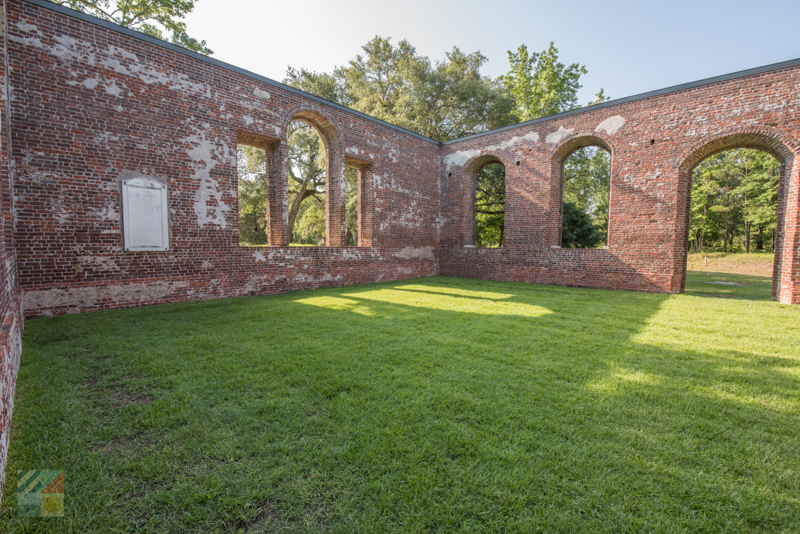
The Ruins of Brunswick Town, a Colonial North Carolina Settlement, and Fort Anderson
The town was named after Brunswick-Lüneburg, a German territory ruled by Great Britain’s reigning King George I. Brunswick Town was an active and popular town for North Carolina settlers from 1720 to 1780. But the area was first occupied by Native American tribes who allied against the inland Tuscarorans in the Tuscarora War of 1711–1715 and later fought against the colonists during the Yamasee War of 1715–1717. In 1725, the Lord Proprietors granted Colonel Maurice Moore 1,500 acres of land where he established Brunswick Town in June 1726. Colonel Maurice Moore was the son of Carolina Governor James Moore, and Colonel Moore was the father of General James Moore and Judge Maurice Moore. Judge Maurice Moore was the father of Supreme Court Associate Justice Alfred Moore.
The first lot was sold to Cornelius Harnett Sr.
Brunswick Town was the first successful European settlement in the Cape Fear region, a major British port in the 18th century, and home to two provincial governors. It was also a busy port for exporting longleaf pine products such as tar, pitch, and turpentine used for the Royal Navy and merchant ships. During the 1730s, Brunswick Town became the Cape Fear region’s political center and New Hanover County’s seat. Brunswick Town was crucial to Wilmington because the Cape Fear River was too shallow near the mouth of Town Creek for large vessels to pass through. From 1743 to 1770 the town was the third capital city of the Province of North Carolina. Brunswick Town lasted 50 years (1726–1776) until it was raided by the British Army during the American Revolutionary War and never rebuilt.
Fort Anderson
Eighty-six years after the town was abandoned, a large portion of the town was covered by earthworks for the construction of Fort Anderson. But it was not until the 20th century that Brunswick Town became an excavation site for the Cape Fear region. That was when the commercial and residential colonial homes were unearthed; also St. Philip’s Church, Fort Anderson, and Russellborough, the mansion of its former governor. This excavation put the historic district and St. Philip’s Church on the National Register of Historic Places. This site was excavated from 1950 to 1970, uprooting the ruins of 25 structures, including houses, churches, and craft buildings.
Genealogy Hints
Archaeology and Genealogy work together in discovering the ancestors and history. It is always best to walk the old property to get a real feel for the times. In this instance, the seventeen hundreds was a profound era of colonial settlements on the American Continent. The challenges that these colonials met and the law that they wrote were the cornerstones that eventually led to freedom for all!